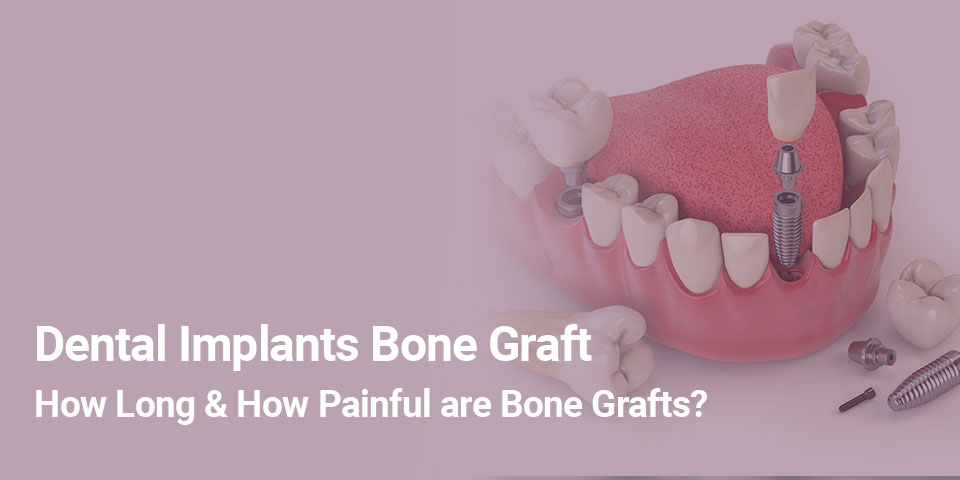Although the name may sound intimidating, bone grafts and dental implants are standard procedure within dental hygiene. You\’ve probably had several friends or family members talk about needing “dental implants.” Bone grafts tend to be part of that process. So whether you\’re a dental patient who needs bone grafting or a dentist who needs to reassure your patient, know that bone grafts are safe, regular, and can be very beneficial to the right patient.
What Are Dental Implant Bone Grafts?
A dental bone graft is a procedure meant to combat bone loss, particularly in the jaw. It replaces the bone mass that has been lost in the jaw in order to support your jaw further and, in turn, your dental health. Bones may be taken from elsewhere in your body, or synthetic bone may be used. Often, bone grafts are done before dental implants in order to strengthen the area before the implants are added.
Who Needs Dental Implants & Bone Grafts?
As stated above, dental implants and bone grafts are very routine procedures. They can become necessary with age or after an injury. If you\’ve ever had a tooth removed, that may leave your gums and teeth vulnerable and create a need for dental implant bone grafts in order to support and strengthen the area. If you\’ve ever had your jaw broken, bone grafting might be a necessary part of recovering it.
Is a Dental Bone Graft Painful?
Many dental patients hesitate when the idea of dental implants comes up because they\’re afraid it might be painful. But some dental bone graft procedures are actually minor procedures. Anesthesia is used to sedate patients so that they won\’t feel pain during the procedure. There is some pain afterwards, but it\’s easily managed with over-the-counter pain medication over the course of the next few days.
Bone grafting that involves taking bone from elsewhere in your body — such as your jaw or hip — will be more painful; however, minimal bone mass is taken and used in bone grafting so that you won\’t be in pain for an extended period of time. Recovery is quick.
Choosing the Right Dental Implants & Bone Grafts
The good news is there are many types of dental implant bone grafts so that you can find the best option for a particular case. Many involve human donors, rather than your own bone, or equine bone (for sinus lifts), which dissolves less quickly than human bone. Again, some procedures even include synthetic bone grafting.
Here are some of the options:
Socket Graft
The socket graft is the most common type of dental bone graft. This is used to strengthen the alveolar bone, the bone which holds your teeth to your jaw. The graft is placed in the socket, thus the name, and typically comes from a human donor, though synthetic bone may be used.
Autograft
An autograft is a dental bone graft that is taken from the patient\’s body, typically elsewhere in the jaw or in the hip. A minimal amount of bone is grafted so as to cut down on pain and recovery time. This type of bone graft benefits is a lack of disease transmission and the use of living cells.
Xenograft
Xenograft dental bone grafts are bone grafts using bone from other animals. As stated above, some procedures will use equine bones, while others might use bovine bones. This can accelerate the bone formation in the area where it\’s needed.
Allograft
Allografts are bone grafts that come from other human donors. This saves the patient some of the pain, though it sometimes leads to disease risk. It\’s up to the donor and the doctor to determine that the allograft is safe to perform.
Alloplast
Alloplast dental bone grafts are made from synthetic bone. These will not risk any possible disease contraction and will have a shorter recovery time than autografts. You do lose out by not having living cells to help accelerate bone formation, however.
Different cases may call for different types of dental implant bone grafts. It\’s best for the dentist and patient to discuss all the available options in order to determine the best choice available.
Get a Free Dental Implant Quote From our Australian Trained Dentists
Dental implants are a significant undertaking that you would not want to entrust with just anyone. They are, however, worth the investment.
It is the most commonly chosen option with patients for missing teeth, and you get a more natural look and feel. You are looking to improve and change your life.
At the end of the day, you make a saving but can encounter many challenges. Put the health and care of your teeth in the hands of those you can trust.
Get a free quote today from Dr Peter Laird at Glenferrie Dental.
